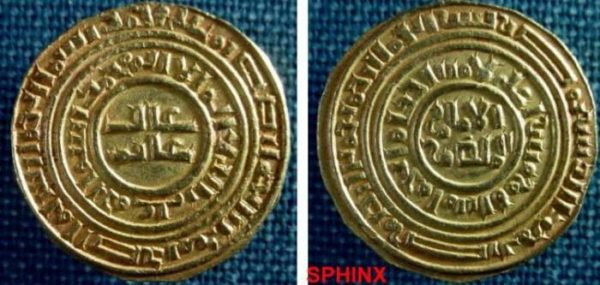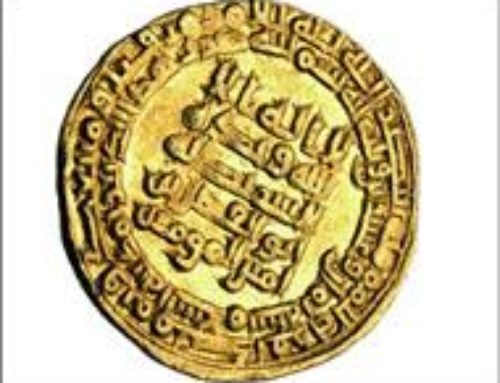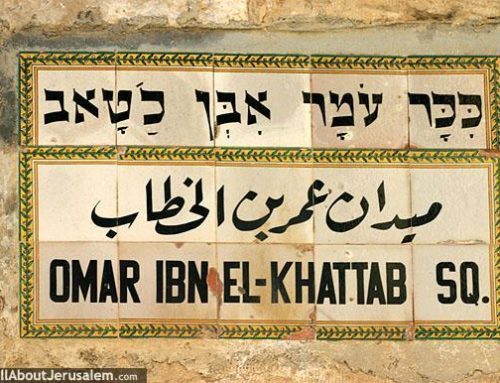The Fatimid Caliphate in Jerusalem
Who were the Fatimids in Jerusalem? Where did the Fatimids come from?
The Fatimids began as a new strong state that originated in Morocco as a caliphate.
The Fatimids claimed that they’re origins can be traced back to the Prophet Muhammad through the lineage of Fatimah, her sons Hasan and Hussain, and their descendants.[1]
Were the Fatimids Sunni or Shia/Shi’i?
The Fatimids were a Shi’i Caliphate.
Shi’a originating from Shi’at Ali (شيعة علي) – the Muslims who claimed themselves to be followers of Ali ibn Abī Tālib, the cousin and son-in-law of the prophet Muhammad.
When did the Fatimid Caliphate Start?
The Fatimid era came up in Morocco during the time of Abbasids, more specifically during the ninth and tenth centuries.
Although the Fatimids established the beginning of their empire in Morocco, soon they extended their rule to Egypt[2] which later became the center of the Fatimid state.
How did the Fatimids take over Egypt?
The Fatimids had repeatedly invaded Egypt soon after coming to power in the ninth century, but failed against the strong Abbasid Caliphate until 969.
The Fatimid caliph, al-Mu’izz li-Din Allah sent general Jawhar who captured and took over Egypt in 969 due to the Abbasids beginning to weaken and lose their power.
The Fatimids continued to the Levant, a historical area that included present-day Syria, Lebanon, Jordan, Israel, Palestine and most of Turkey.
When did the Fatimids conquer Palestine and Jerusalem?
In 969 the Fatimids took over Palestine and Syria under the Caliph Al-Aziz finally triumphing over the Abbasids.[3]
The Fatimid state ruled Jerusalem for almost a century after that, from 969- 1070, [4]but their rule did not go unchallenged.
The Fatimid era was in fact one that saw a lot of dispute and disturbance, owed namely to the presence of competing powers in the area like the Abbasids and the Qaramitah.[5]
What did the Fatimid caliphate achieve and do?
Similar to the caliphs of the Abbasid dynasty, the main efforts that the Fatimid Caliphs undertook in Jerusalem were related to the construction and reconstruction of mosques and buildings.
Jerusalem was plagued again by earthquakes which caused a lot of damage to the Dome of the Rock and Al-Aqsa mosques. Both were reconstructed many times by Caliphs like Al-Mostanser, Al-Zaher, and Al-Naser.[6]
The Fatimids also rebuilt and fortified the walls of the city of Jerusalem itself.[7]
The Fatimids, like the Abbasids before them, also paid particular attention to the flow of knowledge and scholarship in the city and built the well-known “Fatimid House of Science”[8] from which many influential scholars graduated.[9] They also built a hospital in the city and commissioned the erection of monuments like the maqam to the north of the Dome in 1041.[10]

Did the Fatimids rule with religious freedom or persecution?
The Fatimid era was inconsistent regarding the religious and civil freedoms of non-Muslims in Jerusalem.
Fatimid sometimes depended on non- Muslims in government’s finances and chanceries[11].
Under the rule of the caliph Al-Aziz (976-996) Jews and Christians enjoyed a wide scale religious and civil freedom in Jerusalem,[12] but were met with persecution when his son Al-Hakim took over.[13] Pilgrimage to the area by non-Muslim was banned and churches, including the Church of the Holy Sepulcher.[14]
After Al-Hakim’s death, and during the subsequent rule of Al-Zaher, in 1027, the churches were rebuilt ,the ban on pilgrimage was lifted, and the persecution of non-Muslims was put to an end.[15] [16]
Jerusalem under the Seljuk Turks
In year X, Jerusalem was invaded by the Seljuk Turcoman [17]the city for a brief and troubled time. Seljuk Turks initially served as mercenaries to the Abbasids,[18] but in 1055, overthrew them and assumed power in Baghdad.[19] In 1071, Seljuk troops, under the leadership of Muhammad Arsalan, succeeded in conquering Palestine and Syria.[20] Jerusalem fell under their rule for 25 years, excluding some months in 1076-1077 when the Fatimids recovered their power over the city for a short period of time.[21] Jerusalemites rebelled against the Seljuk ruler and expelled him and his troops from the city. Shortly afterwards, the Seljuk army laid siege to Jerusalem, killed many of its inhabitants and looted its treasures.[22]
Although the scholarship continued to prosper under the Seljuk Turks, non Muslims were once again subject to prosecution that led to first crusader invasion in 1099 that ended the 500-year era of Islamic rule of the city.[23][24][25]
[1] Riad Yassin and Amjad Al-Fa’ouri, the Political and Cultural History of Jerusalem (Jordan: Dar Wael, 2012), 40 and Karen Armstrong, Jerusalem: One City, Three Faiths (New York: Ballantine Books, 2005), 257
[2] Aref Al-Aref, History of Jerusalem (Jerusalem: Al Andalus Library, 1999 fifth edition), 130
[3] Teddy Kollek and Moshe Pearlman, Jerusalem: a History of Forty Centuries (New York: Random House, 1968), 165-166
[4] Yaseen and Fa’ouri, the Political and Cultural History, 40
[5] Yaseen and Fa’ouri, the Political and Cultural History, 40
[6] Kollek and Pearlman, a History of Forty Centuries, 161 and Abdul Aziz Duri, “Jerusalem in the Early Islamic Period”, Jerusalem in History (2000): 118 and Armstrong, One City, Three Faiths, 262-263
[7] Yaseen and Fa’ouri, the Political and Cultural History, 40
[8] The Fatimid House of Science was built in 1005 by Al-Hakim bi Amr-Allah as a branch of Dar Al-Hikma in Cairo
[9]Yaseen and Fa’ouri, the Political and Cultural History, 40 and Al-Aref, History of Jerusalem, 137
[10] Yaseen and Fa’ouri, the Political and Cultural History, 40
[11] Duri, “Jerusalem in the Early Islamic Period”, 118
[12] Kollek and Pearlman, a History of Forty Centuries, 165-166 and Al-Aref, History of Jerusalem, 132
[13] Duri, “Jerusalem in the Early Islamic Period”, 118 and Al-Aref, History of Jerusalem, 132
[14] Kollek and Pearlman, a History of Forty Centuries, 165-166 and Armstrong, One City, Three Faiths, 258-259
[15] Kollek and Pearlman, a History of Forty Centuries, 166 and Duri, “Jerusalem in the Early Islamic Period”, 118
[16] Al-Aref, History of Jerusalem, 135
[17] Armstrong, One City, Three Faiths, 268-269
[18] Al-Aref, History of Jerusalem, 137
[19] Kollek and Pearlman, a History of Forty Centuries, 166
[20] Al-Aref, History of Jerusalem, 142
[21] Kollek and Pearlman, a History of Forty Centuries, 166 and Al-Aref, History of Jerusalem, 137
[22] Al-Aref, History of Jerusalem, 142
[23] Kollek and Pearlman, a History of Forty Centuries, 166
[24] Armstrong, One City, Three Faiths, 270 and Al-Aref, History of Jerusalem, 144
[25] Yaseen and Fa’ouri, the Political and Cultural History, 41






